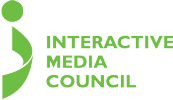Accessibility Statement
The power of the Web is in its universality. Access by everyone regardless of disability is an essential aspect.
~ Tim Berners-Lee, inventor of the Web and Director of the World Wide Web Consortium (W3C)
IMC is committed to providing a website that is accessible to the widest possible audience regardless of technology or ability. Listed below are some of the steps we've taken to achieve this goal. If you encounter difficulty using this site, or have questions or comments, please contact us.
Web Content Accessibility Guidelines
This site adheres to many of the W3C's Web Content Accessibility Guidelines 2.0, the de facto guidelines for making content accessible on the Web. This means that this site is accessible by people with a wide range of disabilities, including blindness and low vision, deafness and hearing loss, learning disabilities, cognitive limitations, limited movement, and photosensitivity.
Web Standards
This site adheres to W3C web standards. It is built using HTML and CSS. We also adhere to industry best practices, such as separating content and presentation and using valid, semantically-correct markup. Through adherence to these standards and practices we ensure this site's compatibility with a diversity of browsers, platforms, devices and future technologies.
Links
Link text is written to clearly and concisely describe the target resource, and make sense out of context. This means that a person reading a link on this site should be able to understand its purpose even if all surrounding text were to be removed. Links that may benefit from more details than provided by the text alone include a Title attribute, which displays a tooltip when hovering over the link. Text links leading to a different website provide a notification image (![]() ).
).
Images
Images on this site that convey important information include ALT attributes, which provide meaningful text equivalents. Images on this site used only for decoration do not provide alternative descriptions, but include empty ALT attributes (per accessibility guidelines). Images sourced in the CSS do not provide ALT equivalents.
Text Size
This site is built using scalable fonts, meaning text can be easily resized. If you would prefer the text size to be larger or smaller simply adjust your browser preferences.
Colors
The colors used in this site have been chosen to provide good contrast between text and backgrounds. We have avoided color combinations that are known to cause difficulty for people with vision impairment. We also ensure that information is not conveyed by color alone.
Progressive Enhancement
The foundation of this site is built in HTML. Layers are added to this foundation, such as Cascading Style Sheets (CSS), JavaScript and other web technologies, to improve appearance, usability and functionality. However, this site has no dependency on these layered technologies. Even if the CSS, JavaScript or other layered technology were to be disabled or unavailable, the site will still work. This site is designed to be fully functional in HTML alone.
